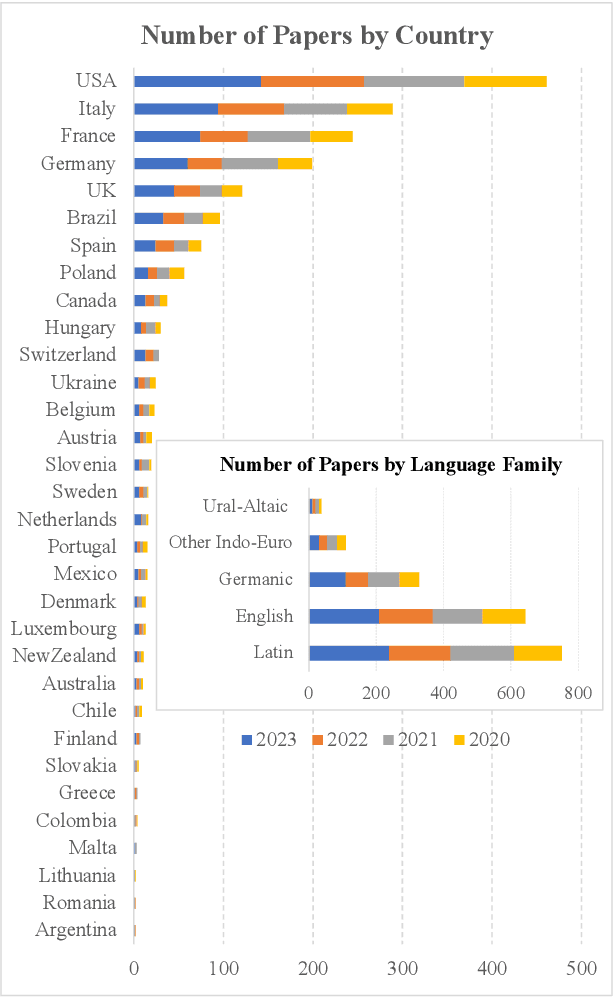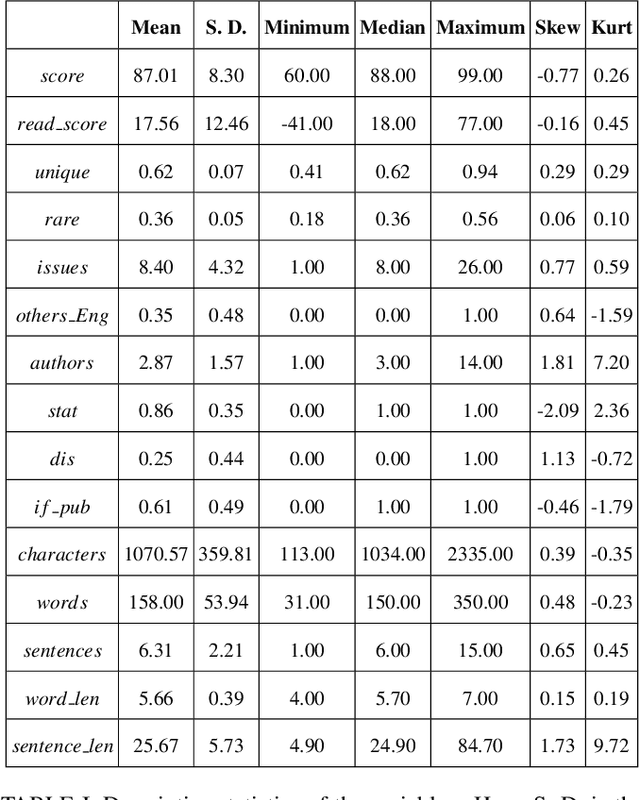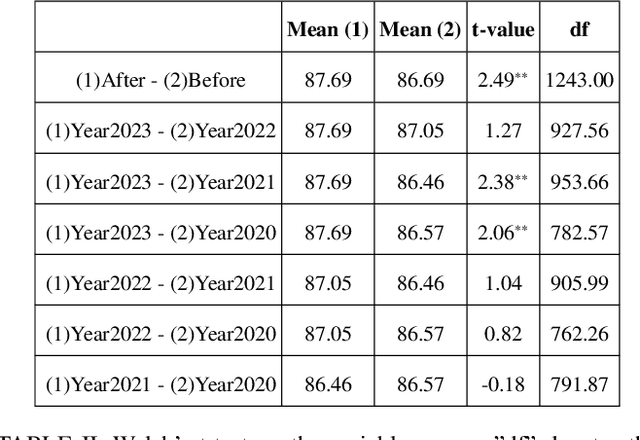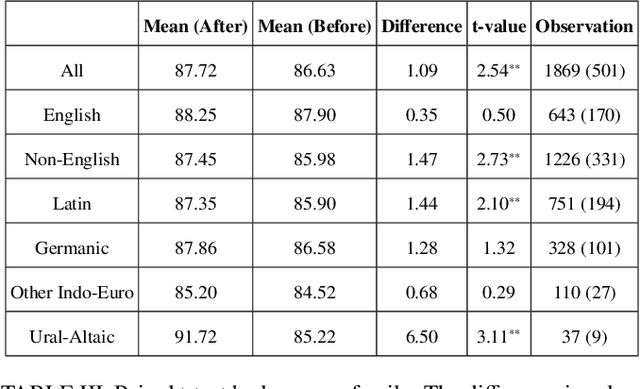Mengqi Zhang
LLM Unlearning Should Be Form-Independent
Jun 09, 2025Abstract:Large Language Model (LLM) unlearning aims to erase or suppress undesirable knowledge within the model, offering promise for controlling harmful or private information to prevent misuse. However, recent studies highlight its limited efficacy in real-world scenarios, hindering practical adoption. In this study, we identify a pervasive issue underlying many downstream failures: the effectiveness of existing unlearning methods heavily depends on the form of training samples and frequently fails to generalize to alternate expressions of the same knowledge. We formally characterize this problem as Form-Dependent Bias and systematically investigate its specific manifestation patterns across various downstream tasks. To quantify its prevalence and support future research, we introduce ORT, a novel benchmark designed to evaluate the robustness of unlearning methods against variations in knowledge expression. Results reveal that Form-Dependent Bias is both widespread and severe among current techniques. We argue that LLM unlearning should be form-independent to address the endless forms of downstream tasks encountered in real-world security-critical scenarios. Towards this goal, we introduce Rank-one Concept Redirection (ROCR), a novel training-free method, as a promising solution path. ROCR performs unlearning by targeting the invariants in downstream tasks, specifically the activated dangerous concepts. It is capable of modifying model parameters within seconds to redirect the model's perception of a specific unlearning target concept to another harmless concept. Extensive experiments demonstrate that ROCR significantly improves unlearning effectiveness compared to traditional methods while generating highly natural outputs.
Topological Structure Learning Should Be A Research Priority for LLM-Based Multi-Agent Systems
May 29, 2025Abstract:Large Language Model-based Multi-Agent Systems (MASs) have emerged as a powerful paradigm for tackling complex tasks through collaborative intelligence. Nevertheless, the question of how agents should be structurally organized for optimal cooperation remains largely unexplored. In this position paper, we aim to gently redirect the focus of the MAS research community toward this critical dimension: develop topology-aware MASs for specific tasks. Specifically, the system consists of three core components - agents, communication links, and communication patterns - that collectively shape its coordination performance and efficiency. To this end, we introduce a systematic, three-stage framework: agent selection, structure profiling, and topology synthesis. Each stage would trigger new research opportunities in areas such as language models, reinforcement learning, graph learning, and generative modeling; together, they could unleash the full potential of MASs in complicated real-world applications. Then, we discuss the potential challenges and opportunities in the evaluation of multiple systems. We hope our perspective and framework can offer critical new insights in the era of agentic AI.
Disentangling Knowledge Representations for Large Language Model Editing
May 24, 2025Abstract:Knowledge Editing has emerged as a promising solution for efficiently updating embedded knowledge in large language models (LLMs). While existing approaches demonstrate effectiveness in integrating new knowledge and preserving the original capabilities of LLMs, they fail to maintain fine-grained irrelevant knowledge facts that share the same subject as edited knowledge but differ in relation and object. This challenge arises because subject representations inherently encode multiple attributes, causing the target and fine-grained irrelevant knowledge to become entangled in the representation space, and thus vulnerable to unintended alterations during editing. To address this, we propose DiKE, a novel approach that Disentangles Knowledge representations for LLM Editing (DiKE). DiKE consists of two key components: a Knowledge Representation Disentanglement (KRD) module that decomposes the subject representation into target-knowledgerelated and -unrelated components, and a Disentanglement-based Knowledge Edit (DKE) module that updates only the target-related component while explicitly preserving the unrelated one. We further derive a closed-form, rank-one parameter update based on matrix theory to enable efficient and minimally invasive edits. To rigorously evaluate fine-grained irrelevant knowledge preservation, we construct FINE-KED, a new benchmark comprising fine-grained irrelevant knowledge at different levels of relational similarity to the edited knowledge. Extensive experiments across multiple LLMs demonstrate that DiKE substantially improves fine-grained irrelevant knowledge preservation while maintaining competitive general editing performance.
Constrained Auto-Regressive Decoding Constrains Generative Retrieval
Apr 14, 2025Abstract:Generative retrieval seeks to replace traditional search index data structures with a single large-scale neural network, offering the potential for improved efficiency and seamless integration with generative large language models. As an end-to-end paradigm, generative retrieval adopts a learned differentiable search index to conduct retrieval by directly generating document identifiers through corpus-specific constrained decoding. The generalization capabilities of generative retrieval on out-of-distribution corpora have gathered significant attention. In this paper, we examine the inherent limitations of constrained auto-regressive generation from two essential perspectives: constraints and beam search. We begin with the Bayes-optimal setting where the generative retrieval model exactly captures the underlying relevance distribution of all possible documents. Then we apply the model to specific corpora by simply adding corpus-specific constraints. Our main findings are two-fold: (i) For the effect of constraints, we derive a lower bound of the error, in terms of the KL divergence between the ground-truth and the model-predicted step-wise marginal distributions. (ii) For the beam search algorithm used during generation, we reveal that the usage of marginal distributions may not be an ideal approach. This paper aims to improve our theoretical understanding of the generalization capabilities of the auto-regressive decoding retrieval paradigm, laying a foundation for its limitations and inspiring future advancements toward more robust and generalizable generative retrieval.
Open Problems and a Hypothetical Path Forward in LLM Knowledge Paradigms
Apr 09, 2025Abstract:Knowledge is fundamental to the overall capabilities of Large Language Models (LLMs). The knowledge paradigm of a model, which dictates how it encodes and utilizes knowledge, significantly affects its performance. Despite the continuous development of LLMs under existing knowledge paradigms, issues within these frameworks continue to constrain model potential. This blog post highlight three critical open problems limiting model capabilities: (1) challenges in knowledge updating for LLMs, (2) the failure of reverse knowledge generalization (the reversal curse), and (3) conflicts in internal knowledge. We review recent progress made in addressing these issues and discuss potential general solutions. Based on observations in these areas, we propose a hypothetical paradigm based on Contextual Knowledge Scaling, and further outline implementation pathways that remain feasible within contemporary techniques. Evidence suggests this approach holds potential to address current shortcomings, serving as our vision for future model paradigms. This blog post aims to provide researchers with a brief overview of progress in LLM knowledge systems, while provide inspiration for the development of next-generation model architectures.
UIPE: Enhancing LLM Unlearning by Removing Knowledge Related to Forgetting Targets
Mar 06, 2025Abstract:Large Language Models (LLMs) inevitably acquire harmful information during training on massive datasets. LLM unlearning aims to eliminate the influence of such harmful information while maintaining the model's overall performance. Existing unlearning methods, represented by gradient ascent-based approaches, primarily focus on forgetting target data while overlooking the crucial impact of logically related knowledge on the effectiveness of unlearning. In this paper, through both theoretical and experimental analyses, we first demonstrate that a key reason for the suboptimal unlearning performance is that models can reconstruct the target content through reasoning with logically related knowledge. To address this issue, we propose Unlearning Improvement via Parameter Extrapolation (UIPE), a method that removes knowledge highly correlated with the forgetting targets. Experimental results show that UIPE significantly enhances the performance of various mainstream LLM unlearning methods on the TOFU benchmark.
Numerical solutions of fixed points in two-dimensional Kuramoto-Sivashinsky equation expedited by reinforcement learning
Dec 27, 2024



Abstract:This paper presents a combined approach to enhancing the effectiveness of Jacobian-Free Newton-Krylov (JFNK) method by deep reinforcement learning (DRL) in identifying fixed points within the 2D Kuramoto-Sivashinsky Equation (KSE). JFNK approach entails a good initial guess for improved convergence when searching for fixed points. With a properly defined reward function, we utilise DRL as a preliminary step to enhance the initial guess in the converging process. We report new results of fixed points in the 2D KSE which have not been reported in the literature. Additionally, we explored control optimization for the 2D KSE to navigate the system trajectories between known fixed points, based on parallel reinforcement learning techniques. This combined method underscores the improved JFNK approach to finding new fixed-point solutions within the context of 2D KSE, which may be instructive for other high-dimensional dynamical systems.
ASLoRA: Adaptive Sharing Low-Rank Adaptation Across Layers
Dec 13, 2024



Abstract:As large language models (LLMs) grow in size, traditional full fine-tuning becomes increasingly impractical due to its high computational and storage costs. Although popular parameter-efficient fine-tuning methods, such as LoRA, have significantly reduced the number of tunable parameters, there is still room for further optimization. In this work, we propose ASLoRA, a cross-layer parameter-sharing strategy combining global sharing with partial adaptive sharing. Specifically, we share the low-rank matrix A across all layers and adaptively merge matrix B during training. This sharing mechanism not only mitigates overfitting effectively but also captures inter-layer dependencies, significantly enhancing the model's representational capability. We conduct extensive experiments on various NLP tasks, showing that ASLoRA outperforms LoRA while using less than 25% of the parameters, highlighting its flexibility and superior parameter efficiency. Furthermore, in-depth analyses of the adaptive sharing strategy confirm its significant advantages in enhancing both model flexibility and task adaptability.
Uncovering Overfitting in Large Language Model Editing
Oct 10, 2024



Abstract:Knowledge editing has been proposed as an effective method for updating and correcting the internal knowledge of Large Language Models (LLMs). However, existing editing methods often struggle with complex tasks, such as multi-hop reasoning. In this paper, we identify and investigate the phenomenon of Editing Overfit, where edited models assign disproportionately high probabilities to the edit target, hindering the generalization of new knowledge in complex scenarios. We attribute this issue to the current editing paradigm, which places excessive emphasis on the direct correspondence between the input prompt and the edit target for each edit sample. To further explore this issue, we introduce a new benchmark, EVOKE (EValuation of Editing Overfit in Knowledge Editing), along with fine-grained evaluation metrics. Through comprehensive experiments and analysis, we demonstrate that Editing Overfit is prevalent in current editing methods and that common overfitting mitigation strategies are of limited effectiveness in knowledge editing. To overcome this, inspired by LLMs' knowledge recall mechanisms, we propose a new plug-and-play strategy called Learn to Inference (LTI), which introduce a Multi-stage Inference Constraint module to guide the edited models in recalling new knowledge similarly to how unedited LLMs leverage knowledge through in-context learning. Extensive experimental results across a wide range of tasks validate the effectiveness of LTI in mitigating Editing Overfit.
Impact of ChatGPT on the writing style of condensed matter physicists
Aug 30, 2024



Abstract:We apply a state-of-the-art difference-in-differences approach to estimate the impact of ChatGPT's release on the writing style of condensed matter papers on arXiv. Our analysis reveals a statistically significant improvement in the English quality of abstracts written by non-native English speakers. Importantly, this improvement remains robust even after accounting for other potential factors, confirming that it can be attributed to the release of ChatGPT. This indicates widespread adoption of the tool. Following the release of ChatGPT, there is a significant increase in the use of unique words, while the frequency of rare words decreases. Across language families, the changes in writing style are significant for authors from the Latin and Ural-Altaic groups, but not for those from the Germanic or other Indo-European groups.
 Add to Chrome
Add to Chrome Add to Firefox
Add to Firefox Add to Edge
Add to Edge